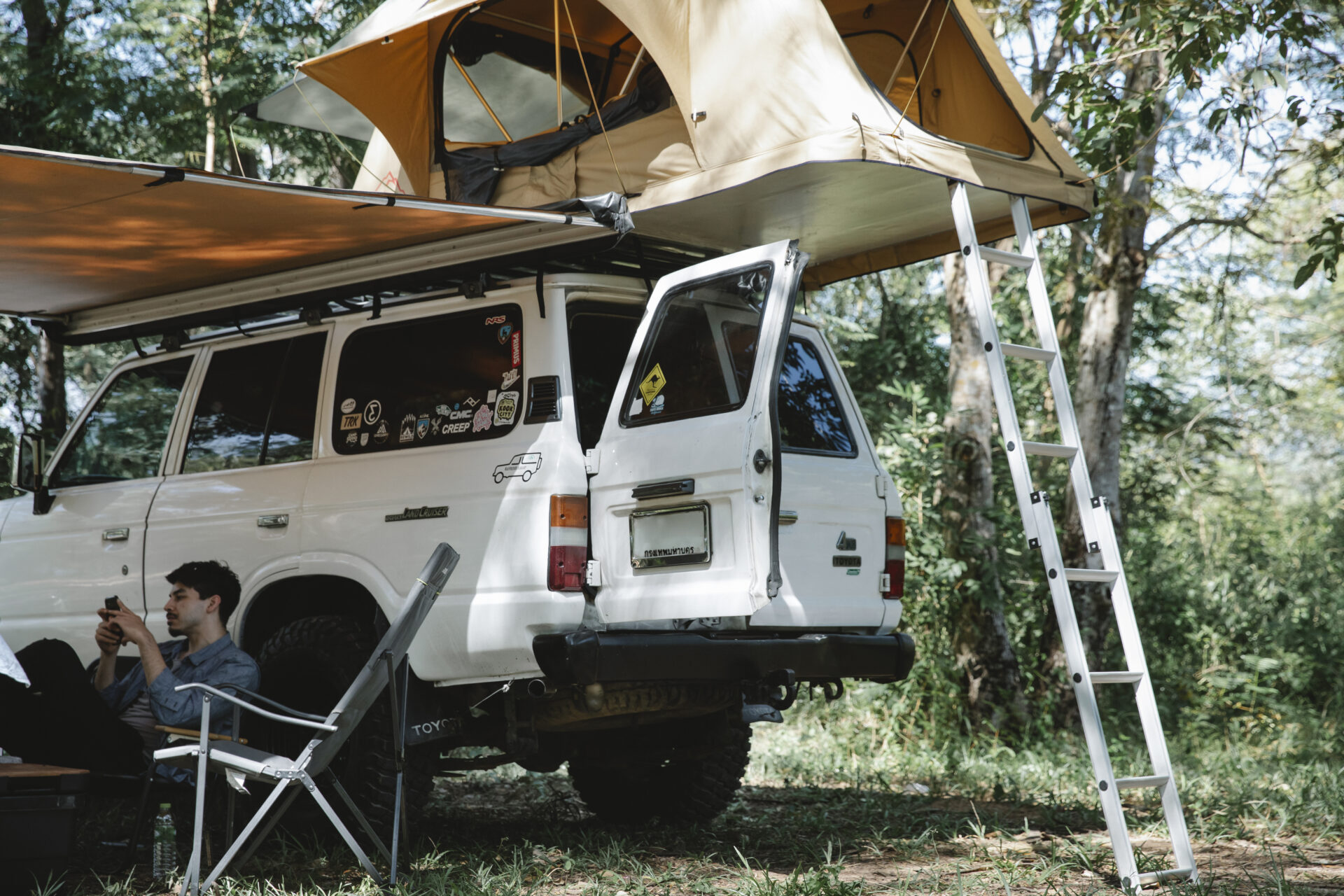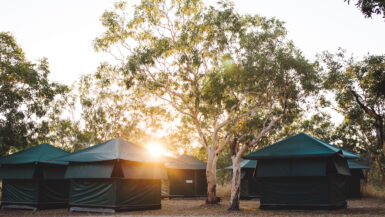Sri Lanka is a beautiful country with stunning natural landscapes, from lush forests to pristine beaches. With its diverse flora and fauna, it’s no wonder that camping has become a popular activity among tourists and locals alike. However, as with any outdoor activity, camping can have a negative impact on the environment if not done responsibly. Fortunately, there are numerous eco-friendly camping sites across Sri Lanka that offer a sustainable and responsible way to enjoy the great outdoors. In this article, we will explore some of the best eco-friendly camping sites in Sri Lanka, where visitors can enjoy the beauty of nature while minimizing their impact on the environment.
Introduction to Eco-Friendly Camping in Sri Lanka
Sri Lanka is a paradise for nature lovers and adventure seekers. The island country is home to some of the most stunning landscapes, diverse wildlife, and vibrant cultures. Camping is an excellent way to explore the beauty of Sri Lanka and get closer to nature. However, camping can have a significant impact on the environment, and it is essential to choose eco-friendly options to minimize the impact on the environment. Eco-friendly camping is all about leaving no trace and taking care of the environment by making sustainable choices.
Eco-friendly camping in Sri Lanka offers an opportunity to experience the beauty of the country while preserving it for future generations. With a range of national parks, wildlife reserves, and mountain ranges, Sri Lanka offers some of the best eco-friendly camping sites in the world. In this article, we will explore the top eco-friendly camping sites in Sri Lanka and provide tips on how to camp sustainably. So, pack your bags, put on your hiking boots, and get ready for an adventure of a lifetime!
Top Eco-Friendly Camping Sites in Sri Lanka
Sri Lanka is a country blessed with natural beauty and diverse wildlife. It is home to many national parks, nature reserves, and mountain ranges that offer unique camping experiences. Here are some of the top eco-friendly camping sites in Sri Lanka:
1. Yala National Park: A Sustainable Camping Experience
Yala National Park is one of the most popular national parks in Sri Lanka and is home to a diverse range of wildlife, including leopards, elephants, and crocodiles. The park offers a unique camping experience, with several eco-friendly campsites that provide a sustainable way to experience the park’s beauty. The campsites are designed to minimize the impact on the environment and offer a unique opportunity to get up close with nature.
2. Wilpattu National Park: A Wildlife Camping Adventure
Wilpattu National Park is the largest national park in Sri Lanka and is home to a variety of wildlife, including leopards, elephants, and sloth bears. The park offers several eco-friendly camping options, including tented camps and treehouses. The campsites are designed to blend in with the natural surroundings and offer a unique opportunity to experience the park’s beauty.
3. Horton Plains National Park: A Camping Experience in the Clouds
Horton Plains National Park is a unique ecosystem located in the central highlands of Sri Lanka. The park is home to several species of flora and fauna and is a popular destination for hikers and nature lovers. The park offers several eco-friendly camping options, including campsites located among the clouds. The campsites offer stunning views of the park’s natural beauty and provide a unique camping experience.
4. Sinharaja Forest Reserve: A Camping Trip to the Rainforest
Sinharaja Forest Reserve is a UNESCO World Heritage site and is home to a diverse range of flora and fauna, including many endemic species. The forest reserve offers several eco-friendly camping options, including campsites located deep in the rainforest. The campsites offer a unique opportunity to experience the forest’s beauty and provide a sustainable way to explore the area.
5. Knuckles Mountain Range: A Camping Experience in the Heart of Sri Lanka
The Knuckles Mountain Range is a UNESCO World Heritage site and is home to a diverse range of flora and fauna. The mountain range offers several eco-friendly camping options, including campsites located in the heart of the mountains. The campsites offer stunning views of the surrounding landscape and provide a unique camping experience.
These are just a few of the top eco-friendly camping sites in Sri Lanka. Each site offers a unique experience and provides a sustainable way to explore the country’s natural beauty.
Yala National Park: A Sustainable Camping Experience
Yala National Park is one of the most popular national parks in Sri Lanka and is home to a wide range of wildlife, including leopards, elephants, and crocodiles. The park covers an area of approximately 130,000 hectares and offers several eco-friendly camping options that provide a sustainable way to experience the park’s beauty.
Eco-Friendly Campsites
The eco-friendly campsites in Yala National Park are designed to minimize the impact on the environment while providing a unique camping experience. The campsites are located in remote areas of the park, surrounded by nature, and offer a range of facilities, including tents, toilets, and showers.
The campsites are designed to use renewable energy sources, such as solar power, and minimize waste by promoting recycling and composting. The campsites also offer guided tours of the park, led by experienced naturalists, who provide insights into the park’s wildlife and ecology.
Sustainable Practices
Yala National Park is committed to sustainable practices and has implemented several initiatives to protect the environment. The park has banned single-use plastics and encourages visitors to bring reusable water bottles and bags. The park also promotes responsible tourism by encouraging visitors to follow the park’s rules and regulations, such as not littering and staying on designated trails.
The park’s wildlife conservation efforts include monitoring and research programs to understand the behavior and ecology of the park’s wildlife. The park also works with local communities to promote sustainable livelihoods, such as eco-tourism and sustainable agriculture.
Camping Experience
Camping in Yala National Park is a unique experience that provides an opportunity to get up close with nature. The park’s campsites are located in remote areas, away from the crowds, and offer stunning views of the park’s natural beauty. The campsites offer a range of activities, including guided safaris, birdwatching, and nature walks.
Overall, Yala National Park offers a sustainable camping experience that allows visitors to explore the park’s beauty while minimizing the impact on the environment. The park’s commitment to sustainable practices and wildlife conservation makes it a must-visit destination for eco-conscious travelers.
Wilpattu National Park: A Wildlife Camping Adventure
Wilpattu National Park is the largest national park in Sri Lanka and is home to a diverse range of wildlife, including leopards, elephants, and sloth bears. The park covers an area of approximately 1,317 square kilometers and offers several eco-friendly camping options that provide a unique way to experience the park’s beauty.
Eco-Friendly Campsites
Wilpattu National Park offers several eco-friendly camping options, including tented camps and treehouses. The campsites are designed to blend in with the natural surroundings and provide a sustainable way to explore the park’s beauty.
The campsites are located in remote areas of the park, surrounded by nature, and offer a range of facilities, including tents, toilets, and showers. The campsites also use renewable energy sources, such as solar power, and promote waste reduction by encouraging recycling and composting.
Wildlife Conservation
Wilpattu National Park is committed to wildlife conservation and has implemented several initiatives to protect the park’s wildlife. The park’s conservation efforts include monitoring and research programs to understand the behavior and ecology of the park’s wildlife.
The park also works with local communities to promote sustainable livelihoods, such as eco-tourism and sustainable agriculture. The park’s conservation efforts have led to an increase in the park’s wildlife population, making it a must-visit destination for wildlife enthusiasts.
Camping Experience
Camping in Wilpattu National Park is a unique experience that provides an opportunity to get up close with nature. The park’s campsites are located in remote areas, away from the crowds, and offer stunning views of the park’s natural beauty.
The campsites offer a range of activities, including guided safaris, birdwatching, and nature walks. The park’s wildlife population provides a unique opportunity to observe and learn about Sri Lanka’s diverse wildlife.
Overall, Wilpattu National Park offers a sustainable camping experience that allows visitors to explore the park’s beauty while minimizing the impact on the environment. The park’s commitment to wildlife conservation and sustainable practices makes it a must-visit destination for eco-conscious travelers.
Horton Plains National Park: A Camping Experience in the Clouds
Horton Plains National Park is a unique ecosystem located in the central highlands of Sri Lanka. The park covers an area of approximately 3,160 hectares and is home to several species of flora and fauna. The park offers a unique camping experience, with several eco-friendly campsites that provide a sustainable way to experience the park’s beauty.
Eco-Friendly Campsites
Horton Plains National Park offers several eco-friendly camping options, including campsites located among the clouds. The campsites are designed to minimize the impact on the environment and offer a unique opportunity to get up close with nature.
The campsites use renewable energy sources, such as solar power, and promote waste reduction by encouraging recycling and composting. The campsites also offer a range of facilities, including tents, toilets, and showers.
Unique Landscape
Horton Plains National Park is known for its unique landscape, which includes cloud forests, grasslands, and rivers. The park’s landscape provides a unique opportunity to explore Sri Lanka’s natural beauty and learn about the country’s diverse ecology.
The park’s most famous attraction is the World’s End, a cliff that drops off into a sheer 870-meter drop. The view from the cliff provides a stunning vista of the park’s natural beauty and is a must-visit destination for nature lovers.
Camping Experience
Camping in Horton Plains National Park is a unique experience that provides an opportunity to explore the park’s natural beauty while minimizing the impact on the environment. The park’s campsites are located in remote areas, away from the crowds, and offer stunning views of the park’s unique landscape.
The campsites offer a range of activities, including guided nature walks, birdwatching, and stargazing. The park’s unique landscape provides a unique opportunity to observe and learn about Sri Lanka’s diverse flora and fauna.
Overall, Horton Plains National Park offers a sustainable camping experience that allows visitors to explore the park’s unique landscape while minimizing the impact on the environment. The park’s commitment to sustainable practices and conservation efforts makes it a must-visit destination for eco-conscious travelers.
Sinharaja Forest Reserve: A camping trip to the rainforest
If you’re looking for a unique and eco-friendly camping experience, the Sinharaja Forest Reserve should be on your list. Located in the southwestern part of Sri Lanka, Sinharaja is a UNESCO World Heritage Site and one of the island’s last remaining rainforests.
Camping in Sinharaja is not only an opportunity to connect with nature but also to support the conservation efforts of the forest reserve. The camping sites in Sinharaja are designed to have minimal impact on the environment, and visitors are encouraged to follow sustainable practices during their stay.
The Sinharaja Forest Reserve is home to a diverse range of flora and fauna, including over 50% of Sri Lanka’s endemic species. The forest is also known for its birdlife, and birdwatchers can spot a variety of species, including the Sri Lanka blue magpie and the red-faced malkoha.
There are several camping sites in Sinharaja, including Kudawa, Morningside, and Mulawella. Each site offers a unique experience, and visitors can choose the one that suits their preferences. Kudawa is the most popular camping site and is located at the entrance to the forest reserve. Morningside is a bit further away and offers a more secluded camping experience. Mulawella is located in the heart of the forest and is ideal for those who want to explore the deeper parts of Sinharaja.
During your stay in Sinharaja, you can go on guided nature walks and hikes to explore the forest and its inhabitants. The forest reserve also offers night walks, where you can see nocturnal animals such as the mouse deer and the slender loris. Camping in Sinharaja is a unique way to experience the rainforest and its biodiversity.
Tips for eco-friendly camping in Sinharaja
– Follow the guidelines of the forest reserve and the camping site you choose.
– Use biodegradable toiletries and avoid using plastic as much as possible.
– Do not disturb the wildlife or their habitats.
– Use energy-efficient lighting and turn off all lights when not in use.
– Do not leave any trash behind and leave the camping site as you found it.
Camping in Sinharaja is an unforgettable experience, and it’s also a way to support the conservation of one of Sri Lanka’s most important natural resources. By following sustainable practices, you can minimize your impact on the environment and enjoy a truly eco-friendly camping trip.
Knuckles Mountain Range: A camping experience in the heart of Sri Lanka
The Knuckles Mountain Range is a stunning natural wonder located in the central highlands of Sri Lanka. The range is known for its rugged peaks, cascading waterfalls, and lush forests. Camping in the Knuckles is an excellent way to experience the beauty of this region and connect with nature.
The Knuckles Mountain Range is a UNESCO World Heritage Site and is home to a rich diversity of flora and fauna, including many endemic species. The area is also popular with hikers and trekkers, and there are several trails that visitors can explore during their camping trip.
There are several camping sites in the Knuckles, each offering a unique experience. The sites are designed to have minimal impact on the environment, and visitors are encouraged to follow sustainable practices during their stay. Some popular camping sites include Mini World’s End, Riverston, and Pitawala Pathana.
One of the highlights of camping in the Knuckles is the opportunity to go on guided hikes and treks with local guides. The guides are knowledgeable about the flora and fauna of the area and can point out interesting sights along the way. Visitors can also go on nature walks and birdwatching tours.
During your camping trip in the Knuckles, you can also visit the nearby villages and interact with the local communities. Many of the villages in the area are home to traditional artisans and craftspeople, and visitors can learn about their traditional crafts and ways of life.
Tips for eco-friendly camping in the Knuckles
– Follow the guidelines of the camping site and the local authorities.
– Respect the local culture and customs.
– Use biodegradable toiletries and avoid using plastic as much as possible.
– Do not disturb the wildlife or their habitats.
– Use energy-efficient lighting and turn off all lights when not in use.
– Do not leave any trash behind and leave the camping site as you found it.
Camping in the Knuckles is a unique way to experience the beauty of Sri Lanka’s central highlands and connect with nature. By following sustainable practices, you can minimize your impact on the environment and enjoy a truly eco-friendly camping trip.
Tips for eco-friendly camping in Sri Lanka
Camping in Sri Lanka can be an unforgettable experience, but it’s important to make sure that you’re doing it in an eco-friendly way. By following sustainable practices, you can minimize your impact on the environment and help preserve the natural beauty of the country. Here are some tips for eco-friendly camping in Sri Lanka:
Choose eco-friendly camping sites
When choosing a camping site, look for ones that prioritize sustainability and eco-friendliness. Many camping sites in Sri Lanka are designed to have minimal impact on the environment, and some even have initiatives in place to support local communities and conservation efforts.
Practice Leave No Trace principles
The Leave No Trace principles are a set of guidelines for minimizing your impact on the environment when camping. These include packing out all trash, using biodegradable toiletries, and avoiding damaging vegetation or disturbing wildlife.
Reduce your energy and water usage
When camping, it’s important to be mindful of your energy and water usage. Use energy-efficient lighting and turn off all lights when not in use. Use water sparingly and consider taking quick showers instead of long ones.
Support local communities and conservation efforts
When camping in Sri Lanka, consider supporting local communities and conservation efforts. Visit nearby villages and interact with the locals, and consider buying locally made products. You can also support conservation efforts by donating to local organizations or participating in volunteer activities.
Respect the local culture and customs
Sri Lanka has a rich cultural heritage, and it’s important to be respectful of local customs and traditions. Dress modestly and avoid behavior that may be offensive or disrespectful.
By following these tips, you can have an eco-friendly camping trip in Sri Lanka and help preserve the natural beauty of the country for future generations to enjoy.
Conclusion: Why eco-friendly camping is important in Sri Lanka
Sri Lanka is a country of stunning natural beauty, and camping is a great way to experience it firsthand. However, it’s important to make sure that we’re doing it in a way that supports the environment and local communities. Eco-friendly camping is an excellent way to minimize our impact on the environment and help preserve the natural beauty of Sri Lanka.
By choosing eco-friendly camping sites, practicing Leave No Trace principles, reducing our energy and water usage, and supporting local communities and conservation efforts, we can ensure that our camping trips are sustainable and responsible.
Eco-friendly camping not only benefits the environment but also provides economic benefits to local communities. By supporting sustainable tourism, we can help create jobs and support local businesses, while also preserving the natural beauty of the country.
In conclusion, eco-friendly camping is an important way to experience the beauty of Sri Lanka while also supporting the environment and local communities. By following sustainable practices, we can ensure that our camping trips are responsible and sustainable, and help preserve the natural beauty of the country for generations to come.





Leave a reply